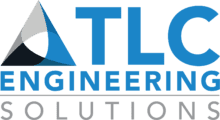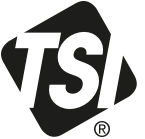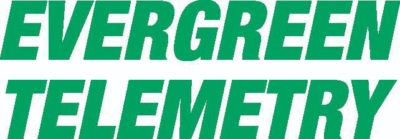| Download Final Conference Program | Schedule of Events | All technical sessions of CxEnergy 2020 will be submitted to AIA under LU/HSW category. |
All on-demand technical sessions of CxEnergy 2020 will be submitted to AIA under LU category.
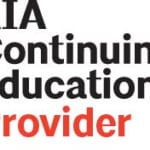 CxEnergy On-Demand provides more topical, in-depth educational presentations than ever for commissioning and energy management professionals. Attendees will earn AIA and other industry certification continuing education credits for technical presentations and case studies from industry experts across all building science disciplines.
CxEnergy On-Demand provides more topical, in-depth educational presentations than ever for commissioning and energy management professionals. Attendees will earn AIA and other industry certification continuing education credits for technical presentations and case studies from industry experts across all building science disciplines.

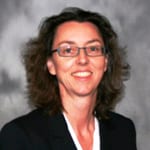
Conserving Energy through Building Enclosure Commissioning
Elizabeth Cassin, LEED AP
Fiona Aldous, Wiss, Janney, Elstner Associates
What should a commissioning provider know to undertake Building Enclosure Commissioning (BECx) with the goal to conserve energy, specifically achieving target energy consumption levels for LEED v4 and in-service energy-efficient performance? BECx activities important to producing a durable, resilient and successful building enclosure can also assist with saving energy and passing future energy audits. Topics, illustrated by a case study, will include: the OPR, critical building science and architectural issues to address in design review and specs, computer simulations, and performance testing.

Don’t Shoot the Messenger: Your Installed Meter Data May be Telling a Larger Story
Barry Dunham, P.E., ONICON Incorporated
There is often suspicion of high-end measurement tools when values don’t add up on a project, but if the installation and applications are good, it’s perilous to ignore the data and blame the meters without investigating whether other factors at play. Using case studies, this session will explore why and how accuracy matters; how meters can predict loss and potential maintenance; what to look for when the numbers don’t match; and how serial communication helps to alleviate discrepancies between BAS and TAB.
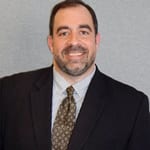
Get Ready for Solar!
How to Make your Projects Solar-Ready
Mark Gelfo, PE, CxA, EMP, LEED Fellow, TLC Engineering Solutions
Not ready for solar? Time to get ready! Codes all over the country are moving towards mandating solar -or solar planning – be incorporated into new buildings. This session will discuss the status of the solar industry, solar requirements in codes, incentives, and how to plan, design, building, and commission your projects today for solar tomorrow.


As the Pages Turn – A Controls Page Turn
Dave Guberud, CxA, Ring & DuChateau
Rachel Rueckert, P.E., CxA, LEED AP, Ring & DuChateau
What is the best way to verify that everyone on the commissioning team understands the project control submittal with its sequences and the interdependencies in the exact same way? A controls page turn meeting! Arguably the most important benefit is communicating in person in a face to face meeting, where you can most effectively gauge truthfulness and buy-in. The end of the session will include a “role play” of a page turn facilitated by the presenters.



Chase Center Arena & Mixed-Use Development: High Performance Design at Mission Bay
Jackie Ventura, Golden State Warriors
Clark Denson, PE, CEM, BEMP
Eric Sheffer, SSRCx
The ambitious Chase Center Arena and Mixed-Use Development Project in San Francisco required an iterative and collaborative design process to achieve the building performance and sustainability goals of the owner, the Golden State Warriors organization. Energy modeling was critical to achieving compliance with local codes, LEED Gold certification, and earned incentives through the Savings By Design program. This presentation will provide perspectives from the owner and design team as to how the project goals were achieved.

Evaluating Hybrid Distributed Energy Projects
Peter Lilienthal, Ph.D., HOMER Energy
The cost, performance, and regulatory environment for distributed energy systems have improved of late, and depending on location, reliability requirements, and load profiles, on-site generation using these systems may now be a financially attractive option for many facilities. Hybrid systems are most common, and multiple options contribute to difficulties in analyzing and reducing demand charges. This presentation will describe how to simplify that analysis, showing results for multiple building types in locations with different solar resources, gas prices, and utility rate structures.

Role of Building Performance Analysis & Whole Building Air-Barrier Testing in BECx
Krishnan Gowri, Ph.D., BEMP, ASHRAE Fellow, Intertek Inc.
Building performance analysis during early design reviews can help ensure quality and compliance to code requirements on commissioned high performance building enclosures. This session will highlight the use of THERM, static diffusion analysis, climate analysis and psychrometry principles to identify potential thermal bridging, condensation, and compliance to mandatory energy code requirements. Examples from recent design reviews and whole building air barrier testing will show how BECx requirements and value engineering decisions on material selection and construction sequencing impact performance.

ASHRAE 90.1 Cx Requirement Changes and Comparison to the Int’l Energy Efficiency Code
Reid Hart, P.E., Pacific NW National Labs
ASHRAE Standard 90.1—Energy Standard for Buildings Except Low-Rise Residential Buildings—was recently overhauled to clarify commissioning requirements for the 2019 edition. An important expansion of typical commissioning work is review of the design for compliance with 90.1 requirements.
The boundaries between a full commissioning project and items required in 90.1 will be explained the approach, requirements, and informative material included will also be reviewed, along with the cost-effectiveness summary used to support the committee approval. In addition, comparisons to the current version of the International Energy Efficiency Code will be made.

Multi-Phased Commissioning on an International Airport in Aruba
Kelly Adighije, LEED AP, Baumann Consulting
Queen Beatrix International Airport serves more than 2.5 million passengers annually. The 5-year Gateway 2030 project, the first major expansion in 20 years, includes an MEP system upgrade, relocation of the Facility Energy Centre and baggage handling system, and the facility’s first sophisticated building automation system. This session will cover commissioning the expansion, the existing facility upgrade and associated BMS integration, through a blend of remote platform-based Cx software, and traditional boots-on-the-ground means.

How Does Cybercrime Impact My Business?
Derek Hedrick, Ameritech Data Solutions
Why has Cybercrime become so prevalent? Because it’s easy, it’s hard to get caught, and it’s really profitable, generating more than $1.5 trillion in 2018 alone. Meanwhile cybercrime damages for corporations are predicted to reach $6 trillion annually by 2021, with 78% of surveyed organizations affected by a successful cyber attack in 2018, with a typical recovery cost ranging between $10,000 and $100,000 – enough to sink many small and medium-sized businesses. This session will explore how to protect your company from becoming one of them.

HyperScale Data Center Commissioning and Construction
Derek De Jesus, CxA, Google
Two-hour panel discussion
This session will bring together experts from industry heavyweights like Google, Facebook, and others on the owner side, as well as Cx providers and contractors, for a lively discussion on commissioning facilities that are now critical to virtually every aspect of our economy and our lives.
Topics will include:
- What qualifications data center owners look for in Cx providers
- How data center Cx has evolved
- What data center design and construction changes might be on the horizon
- The challenges to delivering more efficient data centers
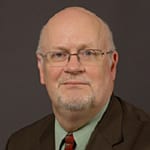
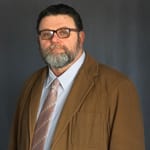
Commissioning for Reliability and Resiliency – Lessons Learned
Bob Knoedler P.E., CxA, EMP, Hanson Professional Services
Jim Magee, CxA, EMP, Facility Commissioning Group
The ability of critical systems to anticipate, resist, respond, adapt, and recover from a failure or disturbance—from natural disasters to intentional attacks to human error—can have huge consequences, and owners of critical facilities are adding formal resiliency plans to their risk management. This presentation will explore commissioning’s role including appropriate metrics, examples of vulnerabilities facing facilities today, and discussion of several case studies where additional planning could have mitigated disruptive or catastrophic events.

Overcoming Reality: Planning for Successful Lighting Control Commissioning
John Busch, LEED AP BD+C, CLCATT,
Leviton Manufacturing Co., Inc.
Successful lighting controls commissioning begins with properly developing design intent and owner requirements. In reality, energy codes are complex and corporate specifications often exceed or are at odds with code mandates. These issues must be considered to ensure a quality environment, while meeting functional testing and limits set forth in these codes. What to do? Is it possible? Could functional testers be “Code Compliance Coaches” assisting to meet code guidelines and even application of exemptions?


Children’s Hospital of Atlanta Case Study – Highly Effective Commissioning
John McFarland, Working Buildings
Jacob Terry, CxAlloy
This discussion of an “above and beyond” commissioning effort on two new medical office buildings for Children’s Healthcare of Atlanta puts special focus on how additional effort did not sacrifice project profitability. The session will show how the commissioning firm exceeded stakeholder expectations (and took on more responsibility as the projects progressed) by drawing on experience with past medical facilities and fully leveraging commissioning management software.


How Monitoring-Based Commissioning Changes the Cx Business Model
Darren Draper, PE, CxA, Epsten Group
Derek McGarry, PE, PointGuard
In the context of deploying automated fault detection on a university campus to deliver Monitoring-Based Commissioning services, this presentation discusses how MBCx changes the business model for Cx service providers. With speakers representing a Cx provider, a software firm and a controls company, the session will review how MBCx compares to traditional Cx or RCx approaches.
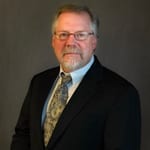
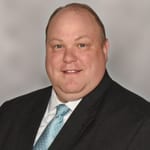
5G, IoT, Collaboration Paradigms and Modern Delivery of Cx Services
Jim Adams, PE, CxA, EMP, Facility Commissioning Group
Matt Adams, CxA, EMP, Facility Commissioning Group
This session explores current IoT protocols that will enable the anticipated application of Mesh Networks, Cloud, Fog and even Mist Computing that will be integral to the built environment as 5G and WiFi6 technologies are deployed. Topics include IIoT (Industrial Internet of Things), M2M (Machine to Machine) communications and convergent technologies that impact building systems and commissioning professionals’ approach. The impact of increasing IT Integration will be addressed through previously unavailable collaboration strategies and MOPs (Methods of Procedure).


Make OPRs Great Again
Stevan Vinci, CET, LEED Fellow, BECxP, CxA+BE, LFA, Morrison Hershfield Corporation
Michael Flemming PE, LEED AP, CxA, CEM, Interface Engineering
Owner’s Project Requirements (OPRs) are too often given insufficient attention — created to match the design, copied from project to project, or forgotten after the design phase. This session will discuss OPRs as important tools at a time of increased scrutiny (through local codes and rating systems) on performance related to resiliency, health, energy and carbon. In this hands-on session, the audience will help develop an OPR as the presenters facilitate and discuss the compromises and implications of the group’s decisions.

VFD Motors: Induced Shaft Voltage, the Causes, Effects and Solutions
Tom Hedrick, P.E., CxA, EMP,
International Commissioning Engineers, Inc.
This session, based on peer-reviewed research, field testing and performance-based solutions, will focus on the shaft voltage that is induced via variable frequency drives, the main causes, magnitude of the problems and possible solutions to this issue, which reduces the life expectancy for VFD motors. Case study measurements, documentation and analysis will help attendees learn how to prevent shaft voltage on bearings and motors to reduce maintenance issues and capital cost expenditures.

Health Care Emergency Power Supply Systems Commissioning: Clearing the Coordination Hurdles
Jason Perigo, CxA, SSRCx
Case studies from four different hospital commissioning projects to identify and manage obstacles when planning and implementing functionally performance testing of emergency power supply systems for new and existing Hospitals. The coordination effort to achieve successful functional testing of a large hospital emergency power supply system can be overwhelming and time consuming, but with the right planning and attention to detail commissioning of EPS and EPSS can be rewarding and the commissioning process valuable to clients.

Signal to Noise Ratio: Can You Hear (See) Me Now?
Wayne A. Dunn, PE, E.W. Dunn
This session describes technical advances and challenges for commissioning modern security systems, and how they are evolving. Today’s systems promise wireless communications, visual recognition and audio acuity sensed by a variety of triggers. To get a signal and react to it, how much/what kind of “noise” information is necessary, and how much is tolerable? How do we plan for security, and develop Owners’ Project Requirements (OPR) that result in accurate design and construction specifications for the safety of building occupants?

Succeed When You Leave: Strategies for Ensuring Persistence of Savings on Energy Projects
Paul Raschilla, EMP, Acceptance Engineering
Drawn from the Energy Management Association’s new O&M personnel training seminar created for utility incentive programs, this presentation demonstrates how to develop a plan to defeat drift and ensure continuous savings in energy projects. Topics covered include producing an M&V plan, training O&M staff, ongoing Cx, implementing CMMS / FDD programs, and developing serviceable documentation. This session will show energy managers how to create existing and ongoing value for building owners.

Commissioning Smoke Control Systems: Lessons Learned
Michael Mantai, PE, CCP, LEED AP, System WorCx
This presentation will discuss numerous lessons learned and suggested best commissioning practices for smoke control systems. Case studies from commissioning projects involving hospitals, a prison, and an atrium smoke control system will be presented and will cover both the pressurization method and the exhaust method of smoke control. Lessons learned will cover everything from design issues to inspection issues to functional testing issues. The presentation will include requirements for Smoke Control Special Inspections required by the International Building Code as well as NFPA 92.

Evolution of MBCx in an IOT Enabled Environment
Dewayne Collins, CEM, Siemens
The role of technology within an Existing Building Commissioning strategy continues to evolve, with Monitoring-Based Commissioning emerging as a differentiator to traditional EBCx projects. The strategic benefit of analyzing large volumes of historical data to identify poor performance and implement improvement measures based on this data is clear, but successful program deployment can be challenging. This presentation will focus on FDD, EBCx, and lessons learned that equate to successful implementation of an MBCx program.


Ensuring High Performing Pre-Engineered Metal Buildings Through Rigorous BECx
Cathleen Crabb, AIS, City of San Antonio TCI, Vertical Division
Mike W. Lackey PE, LEED AP, CxA, LCCx, LLC
The City of San Antonio has embarked on a voluntary program, above and beyond building code requirements, to assure the performance of even the most utilitarian of city structures. As part of the recent capital program, the city’s TCI Vertical Division required air barrier envelope testing on a series of five preengineered metal buildings on two separate campuses as a means to ensure that each building performed as well as a conventional structure.
As a result the buildings have far exceeded minimum air barrier air leakage requirements, and the preengineered metal structures are performing better than an ASHRAE “Average Building,” which is a tighter than the IECC 2015 Code Standard. In fact, the buildings are performing nearly at ASHRAE “Tight Building” Standard. This high performance is attributed to the effective application of building enclosure commissioning and air barrier testing on pre-engineer buildings, and the airtightness will provide significant energy savings well into the future.





Building Energy Efficiency Standards Roundtable: California Title 24, What’s Next in Commissioning & Energy Management
Jim Kelsey, PE, kW Engineering, Moderator
Robert C. Alpers, P.E., CxA, Alpers Engineering Group LLC
John Busch, Leviton
Craig Ochoa, Morrow-Meadows
Chris Olvera, California Energy Commission
Two-hour panel discussion
Building Energy Efficiency Standards have been integral to California’s energy efficiency success, weathering massive change over the past 40 years. The legacy approach to code development faces new marketplace challenges, as more renewable generation deploys, and building professionals demand future-proof codes to keep up with evolving technology. This session offers a highly interactive roundtable, bringing together attendees and a range of building professional stakeholders to explore the challenges and opportunities in future California energy code development. Special attention will be devoted to the commissioning provisions of Title 24.

 CxA certification is open to independent industry professionals who meet all education and experience prerequisites and implement commissioning processes in new and existing buildings.
CxA certification is open to independent industry professionals who meet all education and experience prerequisites and implement commissioning processes in new and existing buildings. The Energy Management Process Seminar is designed to help candidates understand the energy management process and how it can be applied and serves as the final preparation for the Energy Management Professional (EMP) exam.
The Energy Management Process Seminar is designed to help candidates understand the energy management process and how it can be applied and serves as the final preparation for the Energy Management Professional (EMP) exam.


